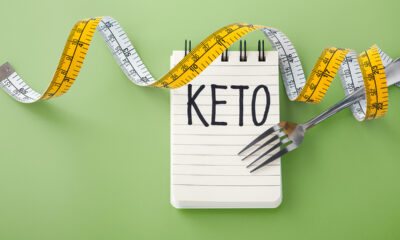Health
Everything You Need To Know About Female Athlete Triad Syndrome
Cutting calories and upping exercise could be working against you without your knowledge, leading to an unhealthy trio of exhaustion, irregular periods and weak bones. Kristina Olson is here to tell you how to combat it.
Unless you’re a recent college athlete, medical professional or coach, chances are you’ve never heard of female athlete triad syndrome. The name includes the word ‘triad’ because it has three key interrelated characteristics: energy deficiency (often brought on by eating disorders), menstrual cycle disturbances and loss of bone density. Below are the syndrome’s main causes and symptoms, and how you can combat them.
Energy availability and disordered eating
Energy availability (EA) is the amount of energy left to complete all other physiological functions after the demands of exercise are met. EA impacts both menstruation regularity and bone mineral density (BMD). In order to meet your body’s energy demands, it’s vital to have a healthy diet with the appropriate amount of calories.
Amazingly, roughly 16-47% of female elite athletes suffer from clinical eating disorders. But you don’t have to have an eating disorder, like anorexia or bulimia, to suffer from low EA. Simple caloric restrictions and irregular eating behaviors can throw your body into protective mode.
For example, when your body doesn’t have enough nutrients, it self regulates and turns off functions like reproductive health, to tell you it doesn’t have enough energy to support pregnancy. Maybe for some women this sounds like a good deal because they’re not ready to have children, but it’s not that simple.
Menstrual dysfunction
The absence of menstruation due to low EA is not uncommon in female athletes. This is referred to as functional hypothalamic amenorrhea (FHA), of which there are two types.
With Primary FHA, the first menstrual cycle is delayed, while all other changes associated with puberty have occurred. Secondary FHA occurs with a cease of menstruation.
According to research, Secondary FHA can be up to 69% more prevalent in sports where performance is affected by leanness, weight and aesthetics. It’s crucial for women to understand how FHA and other menstrual irregularities impact their physiology.
Menstruation is critical to hormone production. Not only can it cause physiological changes, like increased cortisol levels, which can have negative effects on weight loss, your immune function and blood pressure, menstrual dysfunction can result in estrogen deficiency, which can result in loss of BMD, elevated LDL (bad) cholesterol levels and even vascular disease. In general, irregularities in your menstrual cycle increase risk of injury. For example, stress fractures are 2-4 times more common in female athletes experiencing FHA than in those with normal menstruation.
Although studies show that osteoporosis (a BMD of more than 2.5 standard deviations below average) is not common, with a range of 0-13% in female athletes, osteopenia (a BMD of 1-2.5 below average) occurs in 22-50% of female athletes.
Avoiding female athlete triad
Although intense physical activity has caught a bit of a bad wrap because of female athlete triad and its association with conditions like osteoporosis, it’s not the enemy. Wellness and healthy eating habits must be emphasized over weight and aesthetics.
To help combat low EA, establish a healthy diet with the appropriate caloric intake to help you achieve the adequate EA for your body’s demands. Research indicates that EA of 45 calories per kilogram of fat-free mass per day can help regulate menstruation. The calculation (below) is simple and only requires you to know your weight (kg) and your body fat percentage.
Conversion: 1kg = 2.2lb
1) Weight (kg) x body fat percentage in decimal form = body fat (kg)
2) Weight (kg) – body fat (kg) = fat-free mass (kg)
3) Fat-free mass (kg) x 45 (kcal/kg) = kilocalories needed to help regulate menstruation
Rest is also very important. It will not only help with your EA, but it will also help boost your athletic performance and improve recovery. During deep sleep, the human body releases growth hormone that also stimulates repair of both muscle and bone.
Find health information and more in every issue of TRAIN for HER magazine.














